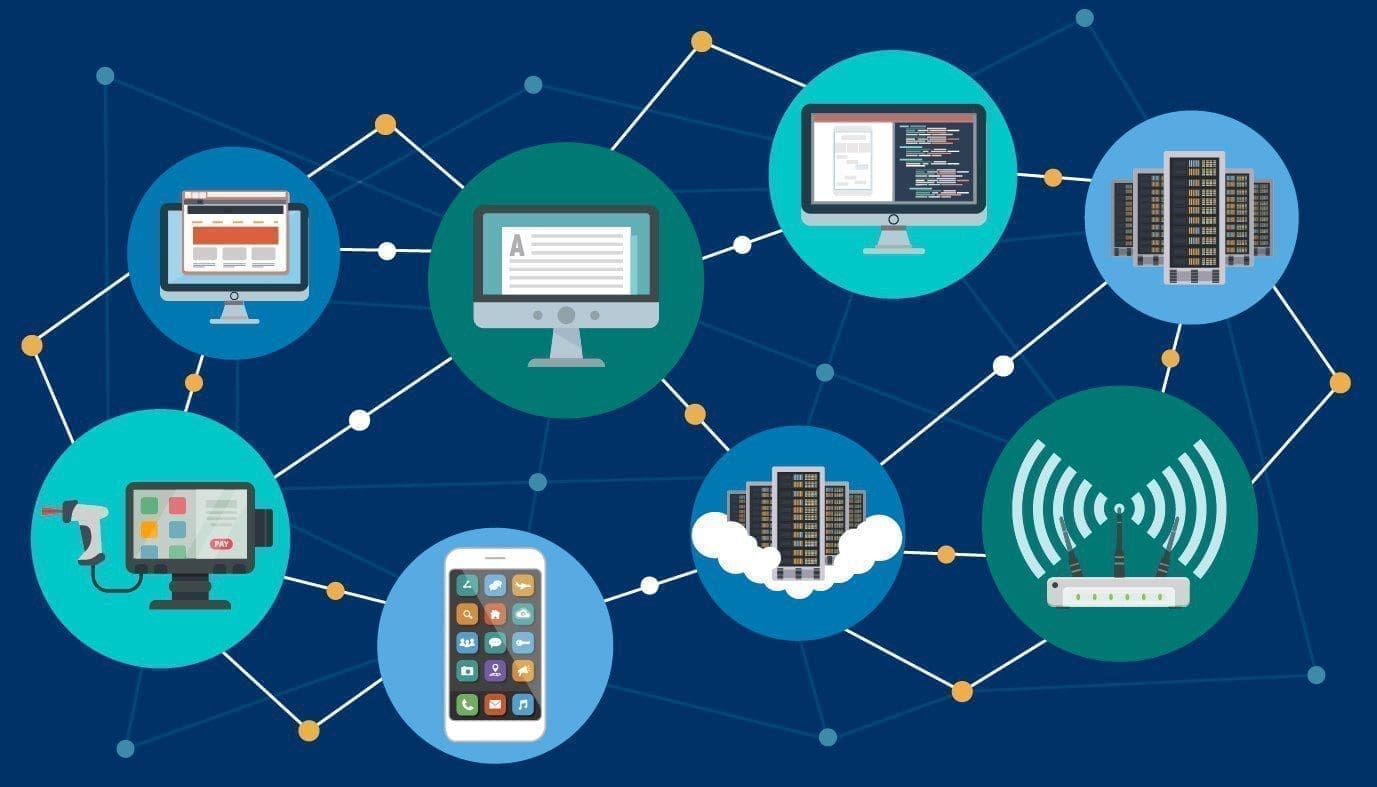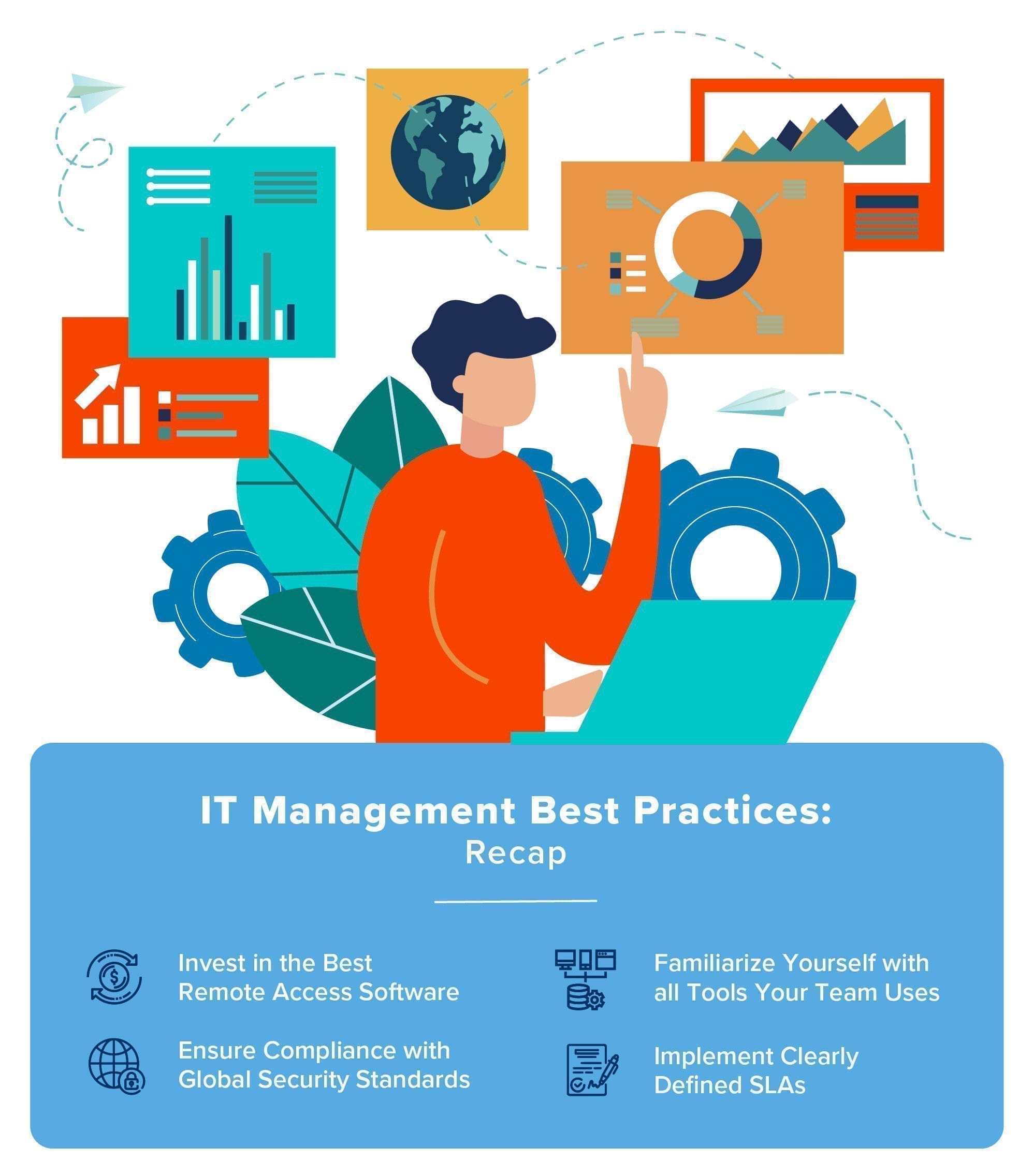

Retail organizations are more than just cash registers and sales representatives. Behind the scenes, there is a vast network of people helping to run every aspect of the business, including the complex world of cardholder data management, transmission, and storage.
For retailers, having a reliable IT management team and the right tools can help prevent common POS problems, increase efficiency, and effectively secure data. Without a strategic IT management plan, retailers may put themselves at risk of compliance violations, cybersecurity threats, and lost sales.
With the globalization of many retail operations, it’s even more important to ensure that IT management best practices are being put in place. But what are these best practices? Below we’ve compiled our top five tips for effective IT management in the retail sector to help you build the best team, with the best tools to keep your operations running smoothly.
What is IT Management?
Strategic IT management is vital to an organization’s efficient, secure operation and management of hardware, software, and networks. Proper implementation of these different systems supports every layer of an organization from service desk technicians, to sales representatives, anywhere in the world.


- Computers
- POS systems
- Servers
- Routers
- Applications
- Software implementation
- Mobile devices
There is also increasing use of cloud infrastructure, which may necessitate additional tools and security practices to protect sensitive information that’s transmitted via the cloud, and shift IT management responsibilities to modernize their networks.
How Does Strategic IT Management Support Retail?
A retailer’s IT capabilities are constantly needing to change as the globalization and growth of retail operations continues. There seems to be no slowing down when it comes to changes in technology and regulations, which means retailers need to be vigilant in keeping up to speed with the fast pace of business.
To do this, retail IT teams are responsible for addressing several challenges, including:
- Supporting intelligent supply chain that manages inventory, products, and shipments worldwide.
- Ensuring PCI DSS compliance in addition to GDPR, CCPA (California Consumer Privacy Act), and other regulatory guidelines applicable to retail organization.
- Protecting cardholder data by preventing gaps in security, identifying breaches quickly, and implementing the proper remote access tools.
- Determining needs of IT department.
- Managing IT budgets including new software, hardware, travel expenses.
- Create processes for POS loss prevention.
That’s a significant amount of responsibility that gets dispersed throughout the IT team. Some of the positions that assist with strategic IT management are:
- CIO
- IT Director
- IT manager
- Chief Technology Officer (CTO)
- Help Desk support
- Network/system administrator
While the day-to-day IT management is conducted by IT managers, CIOs are playing an increasing role in helping to source and implement technology that drives business. A 2018 IBM study shows that 24 percent of CIOs see themselves as playing an important role as technology visionaries. This is important to note because it may affect the types of tools that IT managers and their teams implement for retail organizations.
In the following section, we’ll take a look at the IT management best practices used by the entire team to ensure compliant, secure, and productive retail operations.
Top 5 IT Management Best Practices
Developing a strategic IT management process takes time, but by following these five tips below, you’ll be on your way to retail IT management success.
1. Invest in the Best Remote Access Software
To support the numerous components of retail networks and systems, teams must be able to continue to provide the same level of service for customers, maintain POS uptime, and resolve issues across the organization’s physical and virtual spaces. To ensure efficiency, strategic IT management must equip their teams with remote access software to securely access physical devices and virtual assets from anywhere. That is why it is so important to choose remote access software that supports the retail network in a variety of ways, including:
- Ensure regulatory compliance for certain aspects of the network
- Ability to scale as the retailer grows
- Cross-platform and cross-device compatibility that allows retailers to securely operate both new and legacy equipment
- Reduce costs by offering numerous functions within one, consolidated tool
- Secure remote desktop to assist IT teams with troubleshooting
- Robust security that includes multi-factor authentication, user management, encryption, and whitelisting
- Support for numerous vendors who partner with retailer
- Detailed logging for auditing purposes or identifying a data breach
Secure remote access is an essential part of IT management best practices because it helps lay the foundation of network security and aids in the prevention of problems.
2. Focus on Prevention Not Reaction


By taking a proactive approach to IT management, you can get ahead of potential issues that could prove costly for the retailer. A few ways this proactive approach can help include:
- Implementing or upgrading new software and processes that help scale business accordingly
- Identifying security gaps before a data breach occurs
- Get ahead of changes in regulatory guidelines before violations occur
- Properly training IT staff on all technology, procedures, and goals to align with service level agreements (SLAs)
- Quickly identifying a data breach when and where it occurs within the retail network
3. Ensure Compliance with Global Security Standards
The retail industry is notorious for being subject to numerous regulatory standards to protect cardholders, retailers, and vendors from reaping the consequences of poor security and mismanaged data. Retailers who don’t comply run the risk of losing the trust of their customers and jeopardizing the relationship with financial institutions and vendors.
Additionally, incurring compliance violations may lead to some hefty fines that hit retailers quite hard. According to a 2018 Verizon Payment Security Report, only 52.5 percent of organizations remained fully compliant in 2017 and there’s no indication the situation has improved in 2020. That could result in billions of dollars in potential fines for retailers who don’t take action on compliance.
For many retailers, they need to manage compliance on a global scale, understanding what GDPR compliance is in the European Union, in addition to local, regional, and national regulations, like CCPA. One way to ensure compliance implement best practices for IT management is with the use of comprehensive remote access software. A comprehensive solution is compliant with specific guidelines that govern network security, even when the organization grows, or guidelines change.
4. Be Familiar with the Tools You Use
Strategic IT management does require a number of tools, including software and hardware. Depending on the size of a retailer’s network, that may pose a challenge for IT managers and their teams.
It’s important that any team member who may be using a certain piece of software is fully trained and prepared to help troubleshoot or operate effectively. Training may include everything from attending a trade show, to conducting instructor-led classes for employees.
While training does present upfront costs for retailers, it may provide added value and cost-savings in the future. A well-trained IT team can work more quickly and effectively to address problems because they fully understand the hardware and software being used.
5. Implement Clearly Defined SLAs
A service level agreement (SLA) is a contract commonly used between a company and a vendor, particularly as it relates to IT services. Yet, it can also be an agreement between departments within a company.
For retailers, this is particularly important because of their reliance on vendors who are contracted to help manage a number of services. Some of these services include digital signage and HVAC suppliers where there is an immediate need for collaboration. Having a clearly defined SLA will help each party to understand their responsibilities and goals when it comes to network security, reducing troubleshooting time, and potentially saving the retailer costly mistakes.
Set Up Your IT Team for Success with Impero Connect
Retail information security is crucial to the secure, productive, and effective management of retail operations. Without it, retailers run the risk of losing the trust of their valuable customers, being penalized by regulatory bodies, and incurring hefty fines as a result.
Taking that risk isn’t worth it, which is why Impero Connect offers the most comprehensive remote support solutions for retailers. In fact, 24 percent of the world’s largest retailers choose Impero for its superior service and support. If you’re ready to upgrade your IT management strategy, then it’s time to check out a free trial of Impero Connect today!




